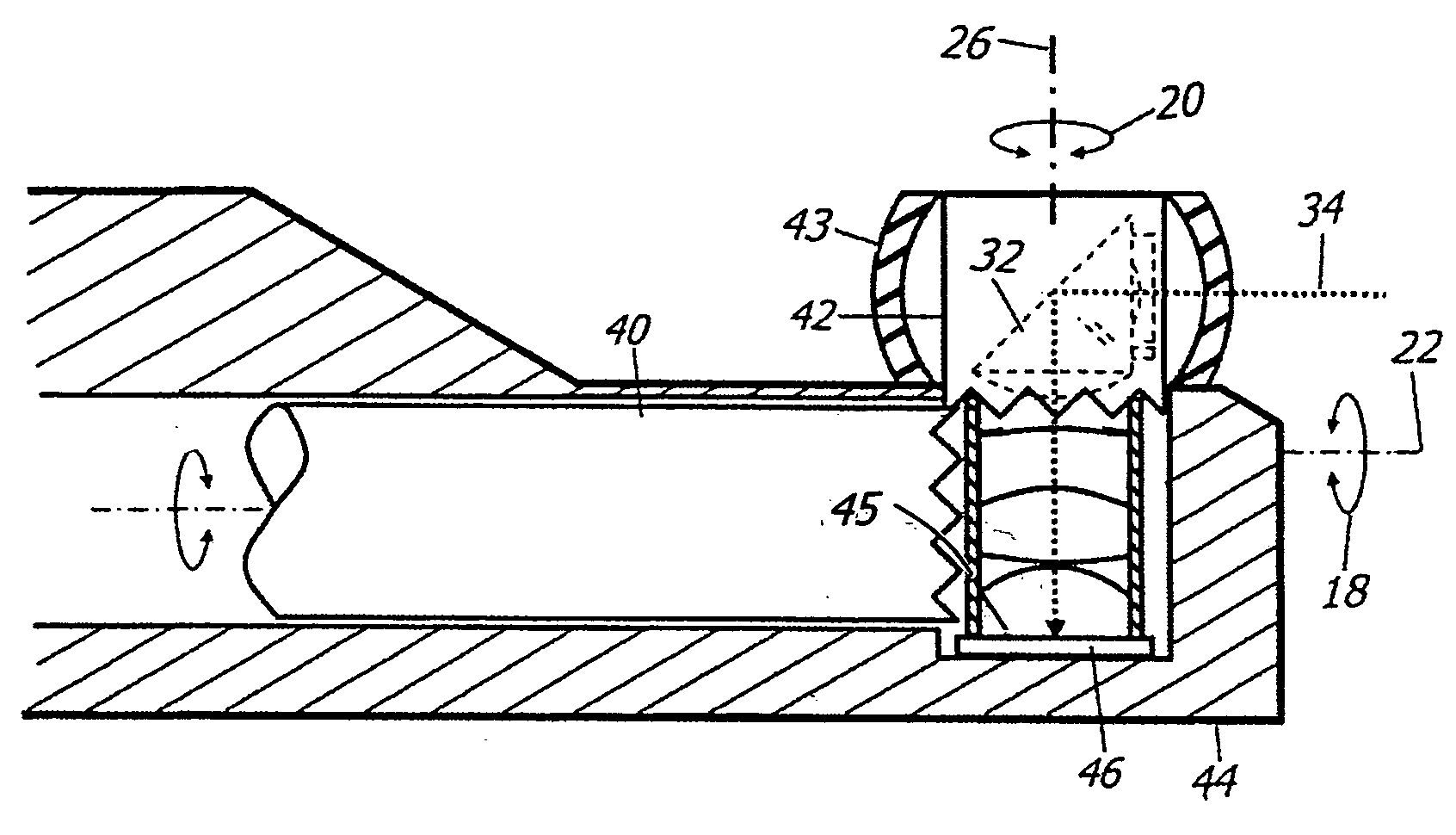Variable direction of view instrument with distal image sensor
a technology of distal image sensor and variable direction, applied in the field of viewing instruments, can solve the problems of specialized expertise, system cost, and number of traditional arrangements
- Summary
- Abstract
- Description
- Claims
- Application Information
AI Technical Summary
Benefits of technology
Problems solved by technology
Method used
Image
Examples
Embodiment Construction
[0033] The basic components of one embodiment of a viewing instrument having a variable direction of view in accordance with the invention are illustrated in FIG. 4. As used in the description, the terms “top,”“bottom,”“above,”“below,”“over,”“under,”“above,”“beneath,”“on top,”“underneath,”“up,”“down ,”“upper,”“lower,”“front,”“rear,”“back,”“forward” and “backward” refer to the objects referenced when in the orientation illustrated in the drawings, which orientation is not necessary for achieving the objects of the invention.
[0034] The instrument includes a shaft with a distal end 44 and a longitudinal axis 22, about which the endoscope may be rotated by the user to scan along the first degree of freedom 18. An optical assembly, which includes a reflecting element 32 for folding the optical path 34 of the assembly, as well as other optical components as further described below, is located at the shaft's distal end 44.
[0035] The reflecting element 32 is rotatable about a rotational a...
PUM
 Login to View More
Login to View More Abstract
Description
Claims
Application Information
 Login to View More
Login to View More - R&D
- Intellectual Property
- Life Sciences
- Materials
- Tech Scout
- Unparalleled Data Quality
- Higher Quality Content
- 60% Fewer Hallucinations
Browse by: Latest US Patents, China's latest patents, Technical Efficacy Thesaurus, Application Domain, Technology Topic, Popular Technical Reports.
© 2025 PatSnap. All rights reserved.Legal|Privacy policy|Modern Slavery Act Transparency Statement|Sitemap|About US| Contact US: help@patsnap.com



